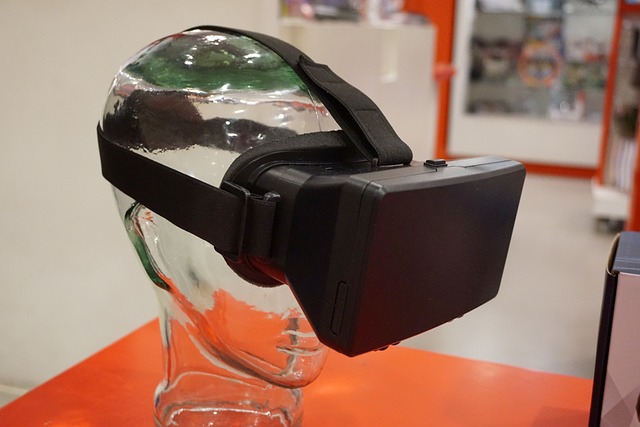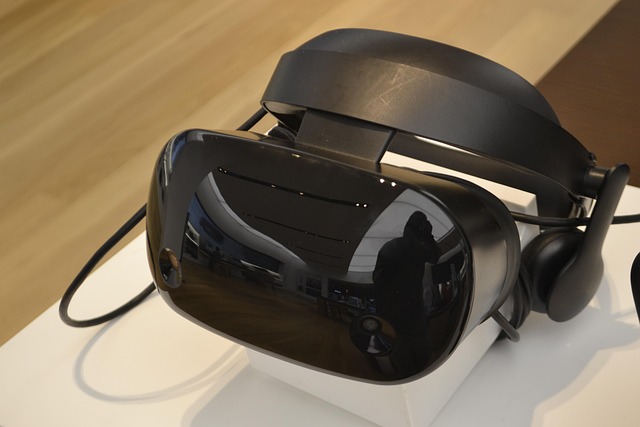Virtual reality has transformed countless hobbies into deeply engaging experiences, and flight simulation is no exception. When a user dons a headset and steps into a world where every cockpit instrument, weather pattern, and distant horizon feels tangible, the line between imagination and reality blurs. A VR airplane simulator is more than a game; it is a portal that lets enthusiasts, students, and even professionals practice complex maneuvers, test strategies, and explore new aircraft without leaving their living rooms. The rise of immersive technology has sparked a renaissance in aviation training, bringing a level of realism that was once only achievable in expensive simulators or on actual aircraft. In this article we trace the evolution of flight simulation, examine the technical foundations that power these systems, and explore how augmented reality and the burgeoning metaverse are shaping the future of flying in virtual spaces.
The Evolution of Flight Simulation
From the earliest mechanical models in the 19th century to today’s photorealistic, haptic‑rich platforms, flight simulation has always aimed to mimic the intricacies of flight. The first electronic simulators emerged in the 1960s, providing pilots with basic visual cues and rudimentary instrument readouts. By the 1980s, personal computers brought 3D graphics into homes, and the first consumer flight simulators appeared on CD-ROM, offering more detailed scenery and physics. The 1990s saw a surge in dedicated flight hardware—yokes, throttles, and rudder pedals—alongside the rise of online multiplayer servers, which added a social dimension to the experience. The advent of VR headsets in the 2010s unlocked a new level of immersion, with stereoscopic displays and motion tracking delivering depth and spatial awareness that flat screens could never match. Today, a VR airplane simulator can simulate thousands of flight conditions, from turbulent jet streams to emergency landings, providing an unparalleled training ground for both amateurs and professionals.
Technical Foundations of a VR Airplane Simulator
At its core, a VR airplane simulator must deliver realistic physics, responsive controls, and a convincing visual environment. The physics engine calculates aerodynamic forces, engine thrust, and atmospheric effects in real time, allowing pilots to feel how a real aircraft reacts to throttle changes or wind shear. High‑fidelity rendering engines generate dynamic skies, weather systems, and terrain textures that adjust to the player’s viewpoint, creating a seamless sense of depth and scale. Motion controllers—such as force‑feedback yokes and throttles—translate digital inputs into tactile sensations, so a sudden stall or rapid ascent can be felt through subtle vibrations. Furthermore, eye‑tracking and foveated rendering optimize performance by rendering only the portion of the scene the user is looking at in full detail, preserving smooth frame rates essential for preventing motion sickness. Together, these technologies form a cohesive system that turns a headset and controller into a cockpit, making every turn and altitude change feel as authentic as a real flight.
Immersive Environments and AR Integration
Augmented reality (AR) expands the boundaries of a VR airplane simulator by overlaying digital information onto the real world. In mixed‑mode setups, players can view their actual surroundings while still seeing the virtual cockpit and aircraft. This hybrid approach is especially valuable for training scenarios that require situational awareness—such as recognizing runways or navigating through real‑world obstacles. AR can also project flight data, instrument panels, and navigation aids onto the user’s physical space, blending the familiar with the fantastical. Some simulators employ external cameras or depth sensors to track the user’s movements in a larger environment, allowing them to physically walk toward a gate or climb onto a propeller, thereby enhancing the sense of presence. By integrating AR, a VR airplane simulator not only recreates the flight experience but also anchors it in the real world, offering a richer, more interactive learning platform.
Social and Multiplayer Aspects in the Metaverse
The metaverse transforms solitary flight simulation into a shared adventure. In a persistent virtual world, players can meet in airports, join virtual airlines, or participate in coordinated training exercises. A VR airplane simulator integrated into the metaverse allows pilots to communicate through spatial audio, meaning the sound of a co‑pilot’s voice comes from the direction they are located in the virtual space. Multiplayer missions—such as search and rescue operations or air traffic control challenges—rely on real‑time synchronization of aircraft positions and weather data, ensuring that every participant experiences the same conditions. The social layer also offers opportunities for mentorship; seasoned pilots can demonstrate maneuvers in real time while novices observe from their own cockpits, creating a community of practice that mirrors traditional flight schools. By merging VR, AR, and metaverse connectivity, flight simulation evolves from a solitary hobby into a collaborative, immersive training ecosystem.
Challenges and Future Directions
Despite remarkable advances, VR airplane simulators still face several hurdles. First, achieving perfect latency is critical; even a fraction of a second lag can disrupt the sense of control and lead to motion sickness. Developers continue to refine network protocols and local processing to keep frame rates stable, especially in multiplayer environments. Second, the cost of high‑end hardware—such as premium headsets, force‑feedback peripherals, and powerful GPUs—can be prohibitive for casual users. As technology matures and prices drop, wider accessibility is expected. Third, creating truly realistic weather systems and air traffic networks requires vast amounts of data and sophisticated modeling, and the balance between fidelity and performance remains a delicate trade‑off. Looking forward, the integration of artificial intelligence will allow simulators to generate dynamic flight environments, adaptive learning modules, and realistic non‑player characters. Combined with advancements in haptic wearables and spatial computing, future VR airplane simulators may offer an experience indistinguishable from real flight, opening doors for pilots worldwide, reducing training costs, and democratizing access to aviation education.
Conclusion
A VR airplane simulator stands at the intersection of gaming, education, and cutting‑edge technology. By harnessing realistic physics, immersive visual rendering, and responsive haptic feedback, it delivers an authentic flight experience that transcends the limitations of traditional training methods. Augmented reality adds a layer of context that brings virtual skies into touchable, real‑world surroundings, while the metaverse creates a shared, persistent space where pilots can collaborate, learn, and play together. Although challenges such as latency, cost, and data complexity remain, the trajectory of innovation points toward an increasingly accessible and lifelike simulation platform. Whether one aims to become a commercial pilot, a recreational aviator, or simply a curious gamer, the next generation of VR airplane simulators promises a flight experience that is both thrilling and transformative.




